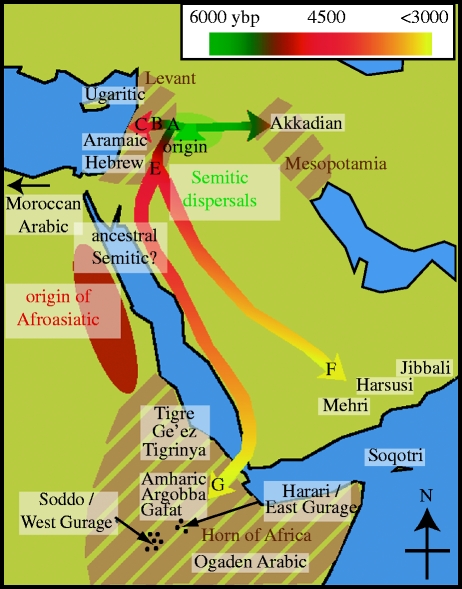Figure 1.
Map of Semitic languages and inferred dispersals. The locations of all languages sampled in this study, both extinct and extant, are depicted on the map. The current distribution of Ethiosemitic languages follows Bender (1971) and distribution of the remaining languages follows Hetzron (1997). The ancient distribution of extinct languages is also indicated (i.e. Akkadian, Biblical Aramaic, Ge'ez, ancient Hebrew and Ugaritic; Bender 1971; Hetzron 1997). The West Gurage (Chaha, Geto, Innemor, Mesmes and Mesqan) and East Gurage (Walani and Zway) Ethiosemitic language groups in central Ethiopia are depicted as two combined groups. The map also presents the dispersal of Semitic languages inferred from our study. An origin of Afroasiatic along the African coast of the Red Sea, supported by comparative analyses (Ehret 1995; Ehret et al. 2004), is indicated in red, although other African origins of Afroasiatic have been proposed (e.g. southwest Ethiopia; Blench 2006). The assumed location of the divergence of ancestral Semitic from Afroasiatic between the African coast of the Red Sea and the Near East is indicated in italics. Semitic dispersals are depicted by arrows coloured according to the estimated time of divergence (see coloured time scale at top of figure), and important nodes from the phylogeny (figure 2) are placed on the arrows to indicate where and when these divergences occurred.

